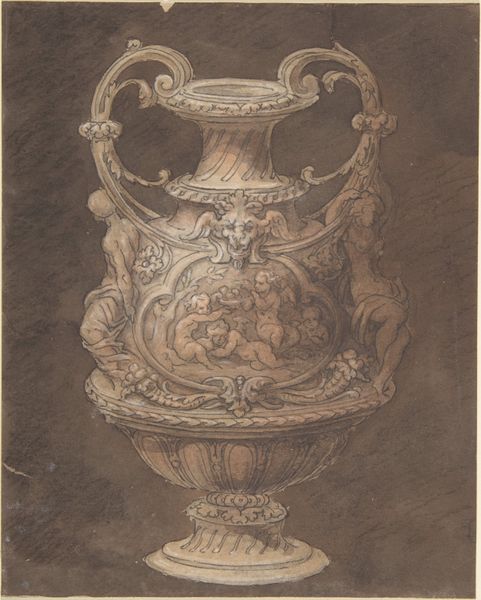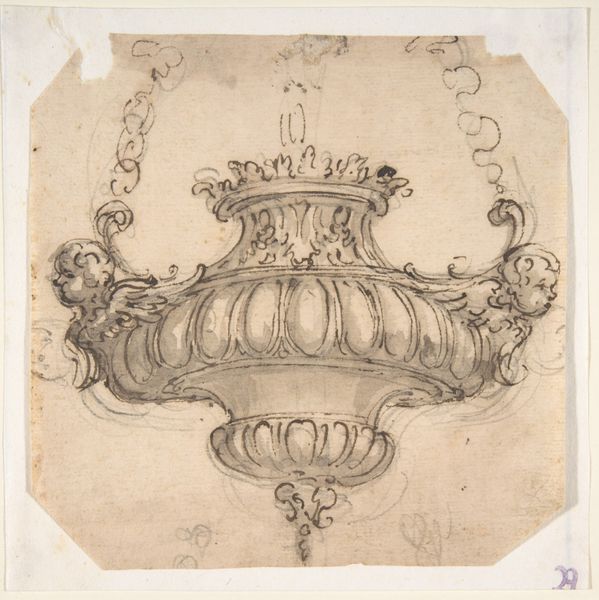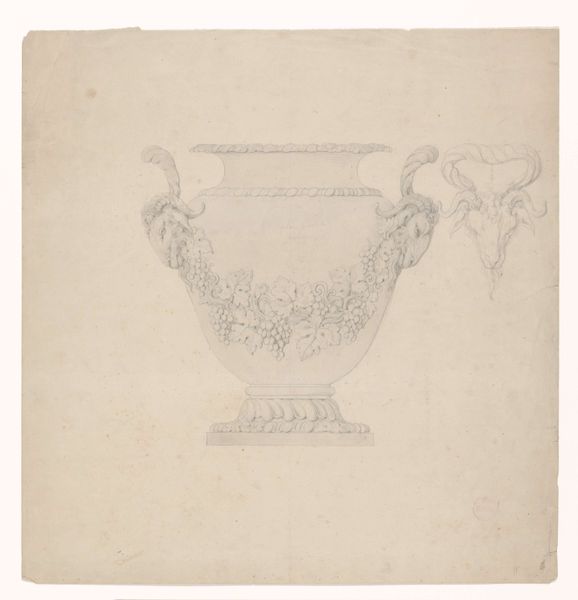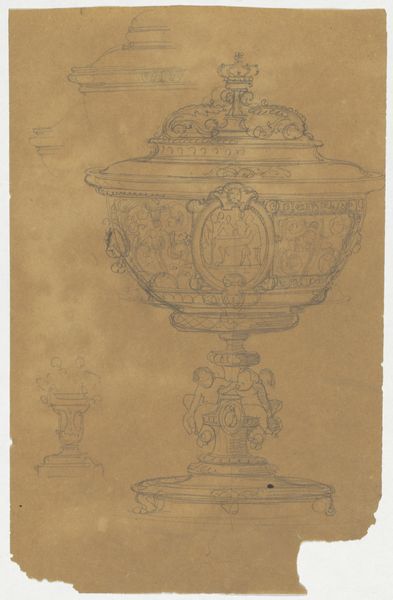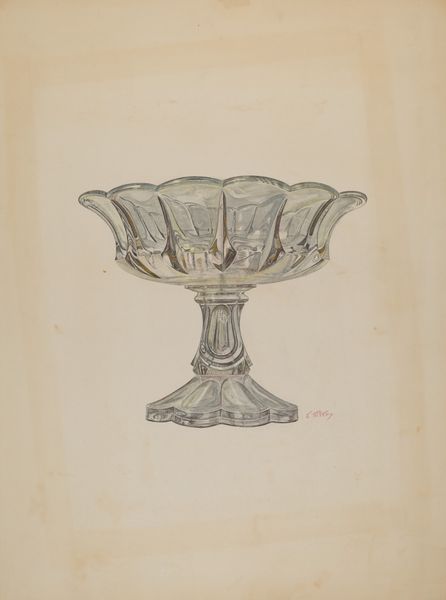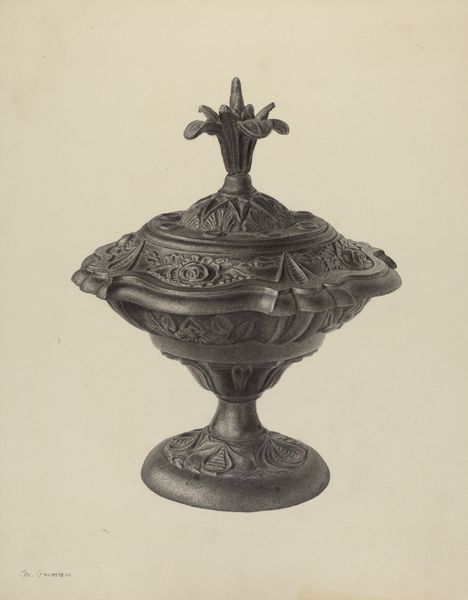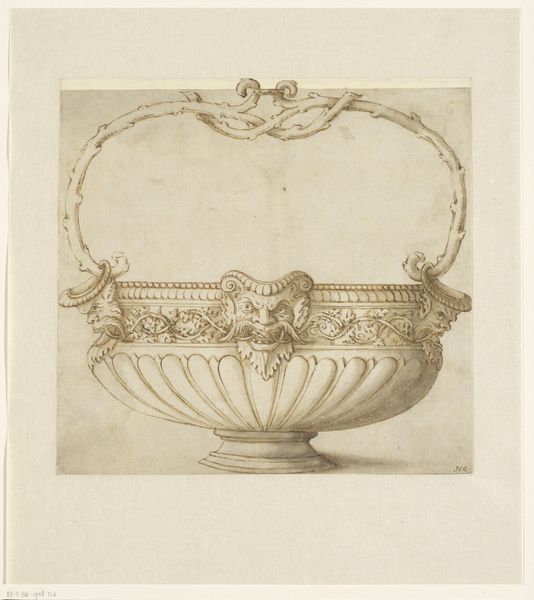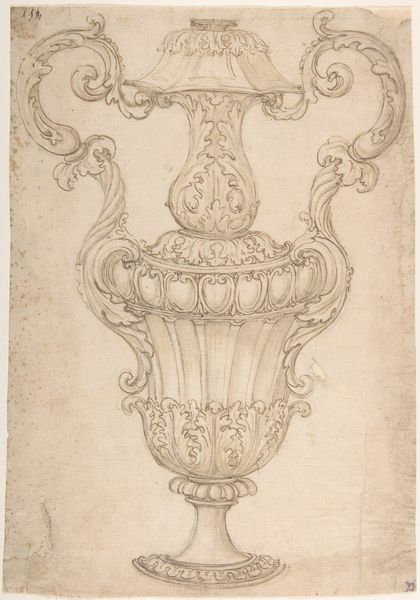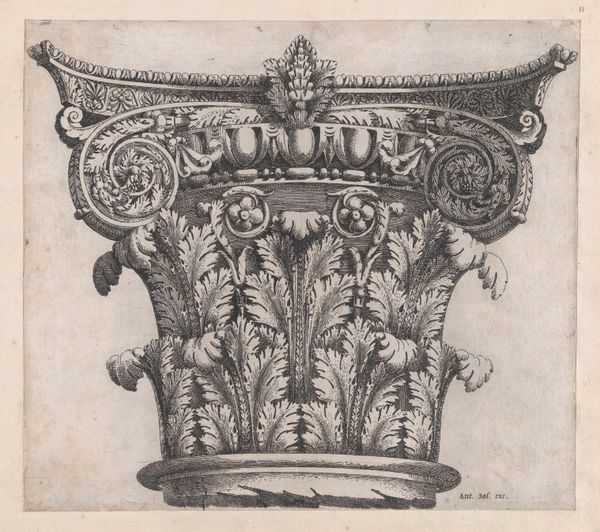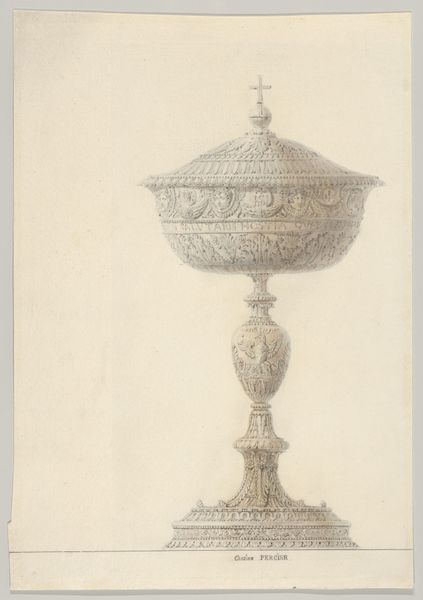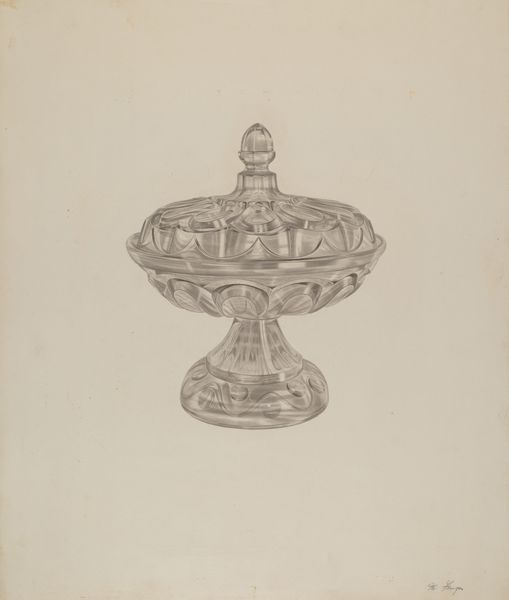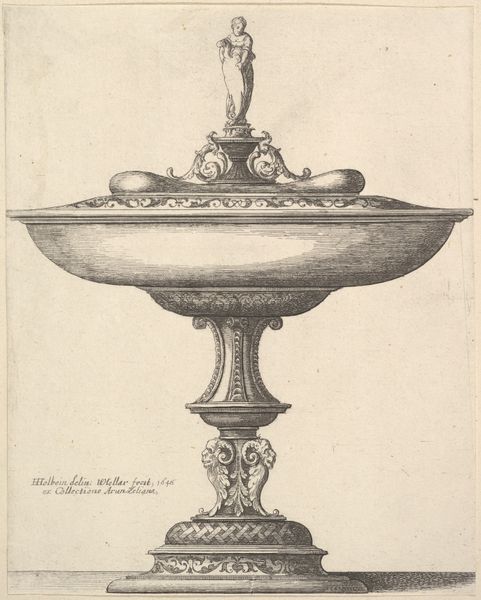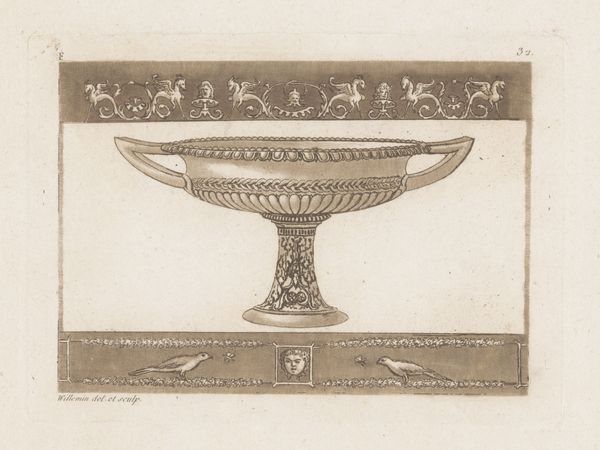
drawing, print, paper, pencil
#
drawing
#
baroque
# print
#
vase
#
paper
#
coloured pencil
#
pencil
Dimensions: sheet: 10 11/16 x 10 7/8 in. (27.1 x 27.6 cm) (irregular borders)
Copyright: Public Domain
Curator: Before us is "Design for Vase with Eagles" by Giovanni Battista Foggini, created between 1652 and 1725. It’s rendered on paper using pencil and colored pencil. Editor: Immediately, I'm struck by its formal, almost aristocratic bearing. It evokes an era of opulent display and unbridled power. The drawing seems to glow from within. Curator: The symmetrical arrangement is particularly compelling. Notice the vase’s contours: its elegant base rising to a complex, layered body adorned with those imposing eagles. The draughtsmanship here establishes the object’s stately presence, wouldn't you agree? Editor: Indeed, the eagles speak to imperial ambitions and references. As a study in the Baroque style, the vase presents a visual articulation of social hierarchy and domination, amplified further by the assertive pose of each eagle, as they turn to mark their territories. The vase’s ornamental detail reinforces an exclusivity available to the select few. Curator: I'd suggest focusing on the way Foggini employed light and shadow through subtle gradations, creating depth and volume on a flat surface. Semiotically, one cannot dismiss the role of repetition here, and how this technique creates visual patterns, engaging the viewer in complex arrangements, alluding to the aesthetic priorities of the time. Editor: And considering the socio-economic implications, the commission of such objects underscores how art served as a medium for projecting authority. This connects back to the idea of vases as repositories of power and influence—elements of everyday culture in a palace becoming part of a political theater. Curator: Precisely. Though a preliminary sketch, its compositional balance, its delicate handling of line and tone suggests a complete work, worthy of display in itself. Editor: Reflecting on our exchange, I consider that studying the aesthetic form of this design enhances our understanding of cultural priorities. Hopefully, this discussion will allow visitors to understand that artwork as part of ongoing power structures. Curator: Yes, our combined interpretations open a window to both formal appreciation and deeper insights into history and society.
Comments
No comments
Be the first to comment and join the conversation on the ultimate creative platform.
